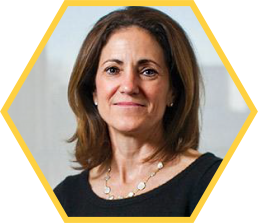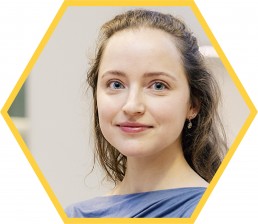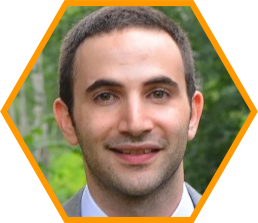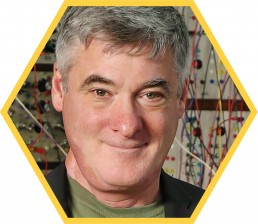Science Hub Symposium 2022
Wednesday, December 7, 2022
9:30AM-5:30PM ET
The annual Science Hub Symposium highlighted current collaborations between MIT and Amazon and explored new avenues of research in areas of mutual interest, including: AI and robotics, conversational AI, database and distributed computing, and video understanding.
Register
Please register by December 5, 2022.
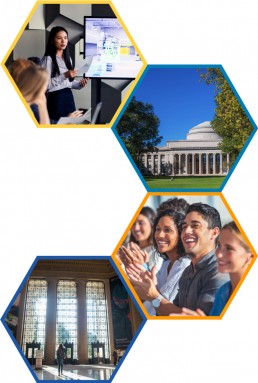
Location
MIT Media Lab (E14) | 6th Floor
75 Amherst Street
Cambridge, MA
Parking
Hotels
There are many great lodging options near MIT. We recommend:
The Kendall Hotel
350 Main Street
Cambridge, MA
Boston Marriott Cambridge
50 Broadway
Cambridge, MA
Agenda
Scroll down or click on the underlined titles for more information
9:30 – 10:00 am | Continental Breakfast Networking & Registration
10:00 – 10:05 am | Welcome — MIT Provost Cynthia Barnhart
10:05 – 10:15 am | A Year in Review
10:15 – 11:00 am | Amazon Inspiration Talks
11:00 – 11:30 am | Break — Meet the Amazon Fellows
11:30 am – 12:30 pm | Science Hub Lightning Talks
12:30 – 1:30 pm | Networking Lunch
1:30 – 2:30 pm | Science Hub Lightning Talks
2:30 – 3:00 pm | Break
3:00 – 4:00 pm | Afternoon Roundtables
4:00 – 5:30 pm | Science Hub Networking Reception
Welcome & A Year in Review
AmazonInspiration Talks
10:15 - 11:00 am
AmazonInspiration Talks
10:15 - 11:00 am
Challenges and Applications in Content Understanding and Generation
Mohammad Abuomar
Head of Technology, Amazon Virtual Product Placement.
Scalable Conversational AI Through Self-Learning
Spyros Matsoukas
Vice President and Distinguished Scientist at Alexa AI
Large Data for Robotic Manipulation at Amazon: Towards Decentralized SSL
Andrew Marchese
Principal Applied Scientist at Amazon Robotics
Break
11:00 - 11:30 am
Tune in during the break to see recorded talks from our Amazon Fellows.
Science HubLightning Talks
Morning Session
11:30 am - 12:30 pm
Science HubLightning Talks
Morning Session
11:30 am - 12:30 pm
Robots filling your on-line order
Alex Jacquillat, Zee Yan, Cathy Wu, Cynthia Barnhart, Alexandria Schmid (MIT)
Every time you place an order on-line, a fleet of robots is hard at work packaging your items. This project aims to optimize the algorithms behind the robots’ behaviors and movements to sort inventory and fill orders in a timely manner, all while avoiding collisions and efficiently assigning tasks.
Robots handling objects at high-speeds
Russ Tedrake, Phillip Isola, Alberto Rodriguez, Orion Taylor (MIT); Michael Mistry, Andrew Marchese, Neel Doshi (Amazon)
Autonomous systems that can manipulate objects at high speeds are still scarce and limited. This project investigates autonomous systems that can move around highly diverse objects in densely occupied spaces at high speed. The project has three parts: Planning, Perception and Control.
Robot Navigating the Last-mile Delivery
Jonathan How (MIT); Tye Brady (Amazon)
Economically viable last-mile autonomous delivery requires robots that are both safe and resilient in the face of previously unseen environments. With these goals in mind, this project aims to develop algorithms to enhance the safety, availability, and predictability of mobile robots.
Robotic Systems with Force Interactions: An Automated Design Pipeline
Allan Zhao, Wojciech Matusik (MIT); Andrew Kimmel, Yuri Ivanov (Amazon)
Traditional robotic system design methods require extensive, time-consuming, and manual trial and error to produce a viable design. We propose an integrated design pipeline to streamline the design and manufacturing of robotic systems for tasks that include force interactions.
Multimodal tactile sensing
Edward Adelson (MIT); Curt Salisbury (Amazon)
We propose to build a high resolution tactile sensor. We already can build robot fingers with extremely high spatial acuity (GelSight), but these fingers lack two important aspects of touch: temperature and vibration.
Soft artificial intelligent tactile sensing arrays for interactive surfaces and human-robot interaction
Irmandy Wicaksono, Joseph Paradiso (MIT); Curt Salisbury (Amazon)
Multimodal sensory information can help robots to interact more safely, effectively, and collaboratively with humans. We propose a bio-inspired, high-density sensor array made on a soft deformable substrate as a new type of artificial skin.
Science HubLightning Talks
Afternoon Session
1:30 – 2:30 pm
Science HubLightning Talks
Afternoon Session
1:30 – 2:30 pm
Video Streaming Protocols with Counterfactual Trace-Driven Simulation
Mohammad Alizadeh, Pouya Hamadanian, Arash Nasr-Esfahany, Devavrat Shah (MIT); Zahaib Akhtar (Amazon)
In this project, we seek to tackle Video streaming quality of experience challenges through the following advances: (1) High-fidelity data-driven simulation of video delivery protocols, (2) Robust policy optimization with causal modeling.
Deep Inverse Rendering for Performance Replay
Fredo Durand (MIT); Yochai Zvik, Michael Chertok, Ahmed Saad, Maxim Arap, Mohamed Omar (Amazon)
We seek to infer photorealistic 3D models from video inputs, as well as combine real video imagery with synthetic imagery, for applications in visual effects, product placement, and augmented reality.
3D Video Reconstruction from 2D video
Vincent Sitzman, and collaborators (MIT); Yochai Zvik, Michael Chertok (Amazon)
A long-standing problem in computer vision is to reconstruct a full 3D model of a scene given only sparsely sampled 2D observations. In this project, we will construct a model that takes as input a set of 2D videos, and reconstructs a 3D representation in the form of a neural radiance field.
Segmenting objects in the long tail
William Freeman (MIT); Ahmed Saad, Maxim Arap, Mohamed Omar (Amazon)
Removing, replacing, or adding objects within a video is a challenging task, requiring estimation of imaging parameters, scene layout, and object identification and segmentation. In this project, given an input video, we aim to identify, segment, and track each of the different objects depicted in a given scene.
Training Large Language Models Efficiently
Yoon Kim (MIT); Rakesh Chada, Sriram Venkatapathy (Amazon)
Large language models have been shown to exhibit surprisingly general-purpose language capabilities. This project aims to investigate methods for more efficiently training large language models by leveraging smaller language models that have already been pretrained.
DSAIL: Data Systems and AI Lab
Sam Madden (MIT)
The Data Systems and AI Lab (DSAIL) investigates opportunities to enhance and optimize large-scale data systems and enterprise applications with learned components synthesized using AI.
Verifying vMVCC, a high-performance database using multi-version concurrency control
Nickolai Zeldovich, Frans Kaashoek (MIT); Doug Terry, Emina Torlak, Xi Wang (Amazon)
Applications routinely rely on databases not just for storing data durably on disk, but also for ensuring that transactions execute atomically despite concurrency and crashes. Our project develops vMVCC to be a practical database system that can run the TPC-C benchmark with performance competitive to that of state-of-the-art research systems.
Roundtable Discussions
3-4 PM ET
Roundtables will address science, societal, engineering and applied domains. The roundtables are in-person only. Attendance at each roundtable will be limited, register early.
Conversational AI
Moderators: Jim Glass (MIT), Chao Wang (Amazon)
A roundtable discussion on conversational AI and systems that help all people interface with machines and other people.
Video Understanding
Moderators: Vincent Sitzman (MIT), Mohammad Abuomar (Amazon)
A roundtable discussion on video understanding; helping devices see and understand our visual world for video-on-demand and live-streaming applications.
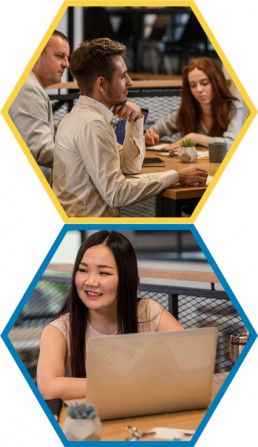
Database & Distributed Systems
Moderator: Sam Madden (MIT)
A roundtable discussion around innovative approaches to designing, building, or operating large-scale database services or distributed cloud services; including security, real-time operations, predictive analytics, efficient resource management, sustainability, efficient computing, quantum computing, etc.
Robotics
Moderators: Sertac Karaman, Nidhi Seethapathi (MIT), Michael Mistry (Amazon)
A roundtable discussion around bringing autonomous mobile robots to homes and workplaces; including social equity and impact; optimization, control, perception of artificial agents, and human-robot interaction.

